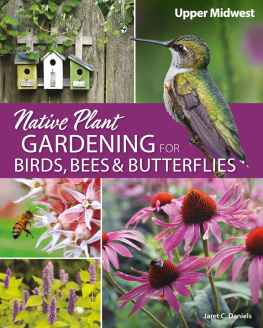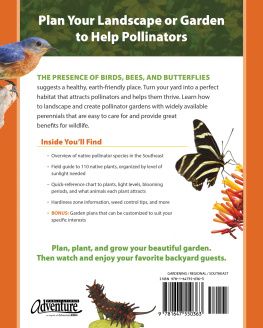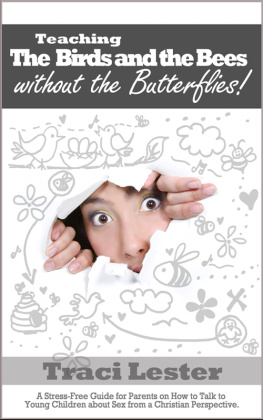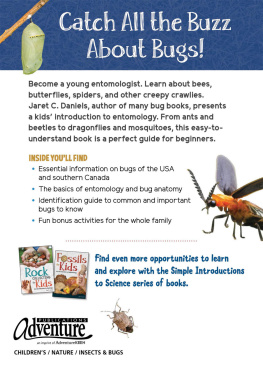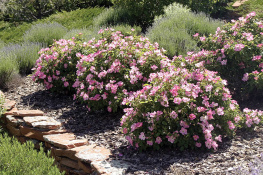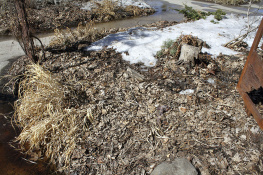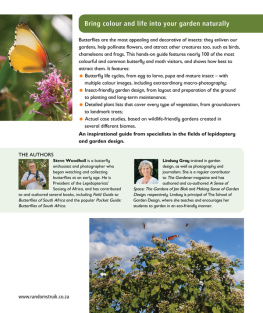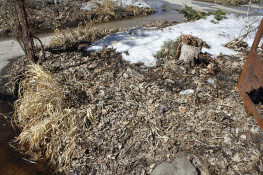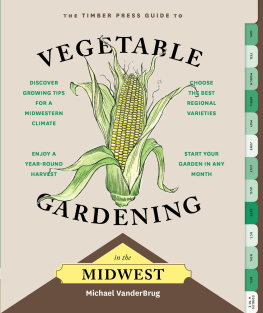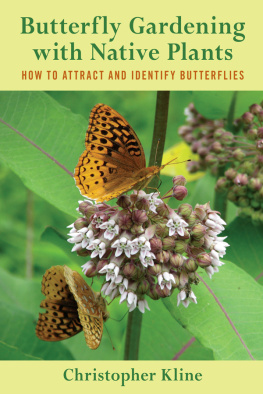Daniels Jaret C. - Native Plant Gardening for Birds, Bees & Butterflies: Upper Midwest
Here you can read online Daniels Jaret C. - Native Plant Gardening for Birds, Bees & Butterflies: Upper Midwest full text of the book (entire story) in english for free. Download pdf and epub, get meaning, cover and reviews about this ebook. year: 2020, publisher: Adventure Publications, genre: Children. Description of the work, (preface) as well as reviews are available. Best literature library LitArk.com created for fans of good reading and offers a wide selection of genres:
Romance novel
Science fiction
Adventure
Detective
Science
History
Home and family
Prose
Art
Politics
Computer
Non-fiction
Religion
Business
Children
Humor
Choose a favorite category and find really read worthwhile books. Enjoy immersion in the world of imagination, feel the emotions of the characters or learn something new for yourself, make an fascinating discovery.
- Book:Native Plant Gardening for Birds, Bees & Butterflies: Upper Midwest
- Author:
- Publisher:Adventure Publications
- Genre:
- Year:2020
- Rating:4 / 5
- Favourites:Add to favourites
- Your mark:
- 80
- 1
- 2
- 3
- 4
- 5
Native Plant Gardening for Birds, Bees & Butterflies: Upper Midwest: summary, description and annotation
We offer to read an annotation, description, summary or preface (depends on what the author of the book "Native Plant Gardening for Birds, Bees & Butterflies: Upper Midwest" wrote himself). If you haven't found the necessary information about the book — write in the comments, we will try to find it.
Native Plant Gardening for Birds, Bees & Butterflies: Upper Midwest — read online for free the complete book (whole text) full work
Below is the text of the book, divided by pages. System saving the place of the last page read, allows you to conveniently read the book "Native Plant Gardening for Birds, Bees & Butterflies: Upper Midwest" online for free, without having to search again every time where you left off. Put a bookmark, and you can go to the page where you finished reading at any time.
Font size:
Interval:
Bookmark:


DEDICATION
To my wife, Stephanie, for her unconditional love and support. I am continuously grateful to have such an amazing person with whom to share my life.
ACKNOWLEDGMENTS
Thanks to my parents for their enduring encouragement of my interest in natural history and all things wild.
Cover and book design by Lora Westberg and Jonathan Norberg
Edited by Brett Ortler
Proofread by Dan Downing
Photo credits:
Front cover: Anise Hyssop by JurateBuiviene/shutterstock.com; Ruby-throated hummingbird by FotoRequest/shutterstock.com; birdhouses by picsbyst/shutterstock.com; Showy Milkweed by Michael Schober/shutterstock.com; hummingbird background by Vaclav Sebek/shutterstock.com; Purple Coneflowers by Barbara Wheeler/shutterstock.com
Back cover: Nodding Onion by Gerry Bishop/shutterstock.com; Black-eyed Susans by Quang Ho/shutterstock.com; bumble bee by kzww/shutterstock.com; Common Buckeye by Leena Robinson/shutterstock.com; magnificent hummingbird male perched by Stan Tekiela
All photos by Jaret Daniels unless otherwise noted.
All photos copyright of their respective photographers. Some photos identified by page in a left (ex. L1) to right (ex. R1) order, descending. Kelly Colgan Azar:
This image is licensed under the Attribution 3.0 Unported (CC BY 3.0) license, which is available at
These images are licensed under the Attribution 2.0 Generic (CC BY 2.0) license, which is available at
These images are licensed under the CC0 1.0 Universal (CC0 1.0) Public Domain Dedication license, which is available at
Images used under license from shutterstock.com. Some photos identified by page in a left (ex. L1) to right (ex. R1) order, descending.
53931:
10 9 8 7 6 5 4 3 2 1
Native Plant Gardening for Birds, Bees & Butterflies: Upper Midwest
Copyright 2020 by Jaret Daniels
Published by Adventure Publications
An imprint of AdventureKEEN
330 Garfield Street South
Cambridge, Minnesota 55008
(800) 678-7006
www.adventurepublications.net
All rights reserved
Printed in China
ISBN 978-1-59193-941-2 (pbk.); ISBN 978-1-59193-942-9 (ebook)
Table of Contents
Why You Should Plant a Garden
Once thought of as unattractive, weedy, or otherwise undesirable, native plants are growing in popularity nationwide. Much of this upsurge is due to the appeal of butterfly, bird, and pollinator gardening. Landscaping with native plants offers numerous benefits. First and foremost, it helps increase habitat and provides critical resources for wildlife. Studies have shown that including native plant species and increasing overall plant diversity, help support a greater abundance and diversity of wildlife. Natives are adapted to the growing conditions, such as soil and climate, of the locations where they naturally occur. As a result, they tend to perform better than non-native species once established, have fewer pest or disease problems, and require less water, fertilizer, and general maintenanceall of which can provide cost savings over time. Lastly, they add tremendous beauty to our landscapes and help provide increased opportunities for people to connector reconnectwith nature.
FIRST STEP: INVENTORY YOUR YARD
When you plant a garden, its critical to select plants that will thrive on your property. This means considering a number of factors, such as light levels and soil conditions, but this isnt as complicated as it might seem at first. In fact, doing just a little homework ahead of time will improve your odds of growing healthy, beautiful plantsand attracting pollinatorsdramatically.
CHECK YOUR HARDINESS ZONE

Credit: USDA Plant Hardiness Zone Map, 2012. Agricultural Research Service, U.S. Department of Agriculture. Accessed from https://planthardiness.ars.usda.gov/.
An easy first step is to check your hardiness zone. The USDA maintains the Plant Hardiness Zone Map (https://planthardiness.ars.usda.gov/), which can be used to help determine appropriate plants for your climate. It is divided into numbered 10-degree-Fahrenheit increments (further divided into two zones per number), based on average annual extreme minimum winter temperature (the lowest temperature it reaches on an average year). So for example, Minneapolis, Minnesota, is in Zone 4b, where the average annual extreme minimum temperature is -25 degrees, and about 30 miles north of there, youll encounter Zone 4a, where the average minimum temperature is -30 degrees. For best results, select species that match your specific zone or are rated to a lower number. This will ensure that they are winter hardy in your area. Avoid plants that have a higher zone number than yours. They are more sensitive to cold temperatures and thus are unlikely to reliably survive over the long term.
SPACE CONSIDERATIONS
Whether you have a sprawling meadow or just enough space for a container garden (see ), the first step when planning a garden is to establish how much room is available, as the overall garden area directly influences plant selection. Avoid the temptation to overcrowd the available space. In other words, landscape for tomorrow, not today. Plants need room to grow, so think about how much space each plant will require once it matures, and be realistic. Use this guide and other resources to help determine each plants height, overall form, and how much it spreads, and plan accordingly before putting it in the ground.
ANALYZE LIGHT LEVELS
The next step is to assess the specific characteristics of your site. It is important to evaluate the existing light, slope, moisture, drainage, elevation, and soil conditions. These environmental factors can significantly influence plant growth, performance, and even survival. Start with light level and slope exposure. Note how many hours of direct, unfiltered sunlight your proposed planting site receives in the summer. Plants labeled as Full Sun will thrive in sunny locations that receive at least 6 full hours of sunlight per day during the growing season. While such plants may still grow in locations that have less light, overall growth and flowering performance may be impacted, often severely.
Plants characterized as Partial Sun or Partial Shade typically perform best with 46 hours of direct sunlight a day or dappled light for the duration of the day. They often thrive when exposed to early day sun and may benefit from a bit less illumination during the hottest times of the afternoon.
Full Shade plants require less than 4 hours of direct sunlight. They often do quite well in locations with dappled shade and tend to prefer direct sun in the morning or the evening.
TAKING SLOPE AND ELEVATION INTO ACCOUNT
When youre evaluating your yards light levels, keep slope exposure in mind, and note the direction a planting site is angled. An areas slope affects the amount of light it receives. North-facing slopes, for example, receive less direct sunlight. With reduced heating, they are cooler, and the soil tends to remain moist for a longer period of time. Such sites also experience a longer period of frost. By contrast, south- and west-facing slopes receive ample sunlight. They tend to be hotter and have a somewhat longer growing season. With increased sun comes increased transpiration and evaporation, making such sites drier; this means they often require increased irrigation to maintain adequate soil moisture. Plants that are more heat and drought tolerant are often ideal for such exposures. While the impact of slope on your plantings can be subtle, it is nonetheless worth considering, especially at higher latitudes (3055 degrees north), where slope can have a greater impact on light levels.
Next pageFont size:
Interval:
Bookmark:
Similar books «Native Plant Gardening for Birds, Bees & Butterflies: Upper Midwest»
Look at similar books to Native Plant Gardening for Birds, Bees & Butterflies: Upper Midwest. We have selected literature similar in name and meaning in the hope of providing readers with more options to find new, interesting, not yet read works.
Discussion, reviews of the book Native Plant Gardening for Birds, Bees & Butterflies: Upper Midwest and just readers' own opinions. Leave your comments, write what you think about the work, its meaning or the main characters. Specify what exactly you liked and what you didn't like, and why you think so.

